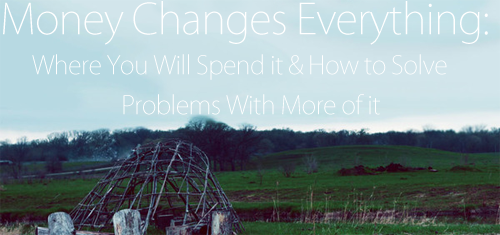
My name is Kelsey Talton, I am a freelance DP based in Chicago. I’m stopping by to share some experiences gained working in preproduction and crowd funding on my latest project ‘The Last Rider.’ Here I look at several often neglected cost centers associated with production as well as some tips for filling in those budgetary gaps with a successful crowd funding campaign! Happy filming!
Pre-Production:
Pre-production can be an extremely exciting point in the production of a film. It can also be what makes or breaks it. Every production, no matter the size, needs pre-production, whether it be a short film, feature, web series, or TV show. In this specific case it’s a short film. Myself (the cinematographer) and a team of producers, a director, AD, and production designer have been meeting for about 4 months, if not more, for a film we will be shooting in July of this year. This is an extremely critical point in filmmaking; it can take years to get done and you’d still probably not be fully prepared for what happens on set. One of the biggest concerns obviously is the budget. Our fellow moviegoers often have no idea of what goes into the behind the scenes of filmmaking. A lot of it is money.
Where You Will Spend Your Money
Here are some things we’ve been going over as far as the budget goes. Each bulleted item requires budgeting and resource allocation, not to mention someone to look into each one to determine all possible options with associated costs and benefits.
- Paying Actors
- Transportation Costs
- Location Costs
- Paying Crew
- Meals and Craft Services
- Format (film vs digital)
- Housing
- Production design
- Costume
- Makeup
- Lighting and Grip Costs
- Insurance
The list can literally go on and on, but these are a few of our main concerns. From a DP’s perspective I can tell you a lot of things get taken out of my budget for other things. That’s not to say they aren’t vitally important but it still hurts when the numbers keep getting taken away from you. One would think that the DP and production designer should get the majority of the budget because well, that’s what people are going to see, but here’s another perspective. If we can’t pay actors, we have nothing to photograph, if we can’t feed or house our crew, then we have no one to set up lights, and if we don’t have insurance or locations then we have nowhere to shoot. So as painful as it is for me to admit, I understand why certain departments get slighted.
Let’s look at a few of these a bit deeper.
Who can guess what the top three costs on that list might be? It may not be as obvious to someone who hasn’t done this before. The answer: Meals and Craft Services, Housing, and Insurance. We’re not on a million dollar feature and we’re not paying actors 2 mil a pop so let’s get real. Those three things rack up really quickly, especially if you’re on a location shoot. It requires you house all of your crew and feed them 3 meals a day, while also providing snacks and beverages for the in-between.
Let’s take my situation for example. We have about 30 members on our crew and we will be on location for 9 days. 3 Meals a day for 30 people that’s 810 meals for 9 days. Remember the last time you at out? Yeah, multiply that by 810 and you’ve got the general idea. Housing costs are numbers I don’t even like to think about and it’s why I’m not a mathematician. You can go to the cheapest place you can find and save a few bucks but if that place doesn’t have bathrooms or electricity, then your crew and yourself will not be, quite literally, happy campers. After 9 days of exteriors in the woods you would all smell pretty terrible, so having a place to come back to and wash up is a must, and unfortunately free housing is not easy to come by. Especially for 30 people.
Creativity Can Get Cut From Your Budget If You’re Not Careful
 Now for the cool stuff; and heartbreaking. Lighting, grip equipment, and format are my forte and my demise. As I said a good portion of the budget is not allotted to me, so I have to really fight for what I need. Let’s take format for example. Originally my director had me convinced that we should shoot on digital because we will be working with Horses. The closest thing I have worked with on set is a dog, a massive 4 legged creature that is 3 times the size of me is much different, especially because we’re not working with trained movie horses. My director has had the opportunity to work with horses on set before and he’s also an equestrian trainer so he has a much better grasp on how horses will act, or not act. We proposed to shoot on the RED camera which is a very powerful machine if used correctly, but initially we were denied by our superiors for fear that the camera would have performance issues in the amount of time we had allotted for filming. A few months after the initial proposal and having shot the trailer for the film, with a horse; I had hopes that maybe we would be able to swing shooting on film. So I spent a good three hours trying to convince my director that it would be do-able. Once I convinced him that it would be possible, the next issue came up. Could we afford it?
Now for the cool stuff; and heartbreaking. Lighting, grip equipment, and format are my forte and my demise. As I said a good portion of the budget is not allotted to me, so I have to really fight for what I need. Let’s take format for example. Originally my director had me convinced that we should shoot on digital because we will be working with Horses. The closest thing I have worked with on set is a dog, a massive 4 legged creature that is 3 times the size of me is much different, especially because we’re not working with trained movie horses. My director has had the opportunity to work with horses on set before and he’s also an equestrian trainer so he has a much better grasp on how horses will act, or not act. We proposed to shoot on the RED camera which is a very powerful machine if used correctly, but initially we were denied by our superiors for fear that the camera would have performance issues in the amount of time we had allotted for filming. A few months after the initial proposal and having shot the trailer for the film, with a horse; I had hopes that maybe we would be able to swing shooting on film. So I spent a good three hours trying to convince my director that it would be do-able. Once I convinced him that it would be possible, the next issue came up. Could we afford it?
So here I am now. I’ve been going back and forth with my director for 3 weeks fighting for super 16 and it’s all coming down to money, the lowest imaginable price I got for my budget was $2200 which is a damn steal for film/transfer/ and developing, but he still doesn’t want to do it. He doesn’t believe we’ll have enough money for everything else. I suppose this would be a good point to mention that we have a $10,000 budget – while also trying to raise another $12,000 on indiegogo. To me, and to many in my field, the prospect of not being able to spend 2200 on super 16 baffles me, but that’s part of the business and that’s why I keep fighting. With so many competing interests battling for limited resources its impossible for everyone to get what they want.
Locations
It’s true to form when people say that locations really matter. If you’re setting isn’t right, why would anyone believe it. Something that I like to think about when I’m in pre-production for a project and even on set is the believability. If I believe it and I’m into it, then my audience should be as well. That goes for locations, production design, acting, and photography. If it’s right, you’ll know. You may have an available free location but it needs to work for your film visually and logistically above all else.
We had a massive issue with our locations, which is a common occurrence for film. Not as many people are into filmmaking as you’d think. We attempted to find a central location, which would cover all of our settings for the film, we had a perfect location but it was a national park and they didn’t want horses walking around, so we had to scrap that and go with something else. We’ve now been fortunate enough to find a few farms that have massive acreage and beautiful settings around the same area, so it worked out in the end (so far).
Something to think about when finding and locking locations are, surrounding areas such as food, hospitals, bathrooms, and other general needs stores. If you are in the middle of nowhere and someone gets hurt, it’s on your hands if it takes an hour to get them to the hospital. Another huge aspect to consider is the owner. If you are using private land, business, or homes then you must fully disclose everything you are doing and agree that any damages are not their liability. I’ve been in situations before where the homeowner was not made fully aware of everything we had planned to do and threatened to kick us out on multiple occasions. We were walking on eggshells the whole time and honestly, that is bad mojo for a film set. You can’t afford to do that to your crew or the owner. If you show up on set and it’s shooting day, you need everything to go as smoothly as possible or you could really be in trouble.
Crowd-funding:
The easiest way to ease budgetary issues is by increasing your budget! For most of us we don’t have easy access to large sums of money so, like may of you, we are turning to crowd funding. Crowd funding is a great way to get people excited about your project while turning them into paying supports to help fill those budgetary gaps! We launched our indiegogo only days ago but we’ve been getting ready for it for about two months. Collecting pictures, information, and shooting a trailer were all things we had to do before we could go live with the site. These things all increase your projects chances of finding backers. You can’t just create a snazzy title and put a little info about yourself and say “pretty please with a cherry on top can you give me everything in your pocket?” and call that a crowd-funding site worth supporting. I know because I’ve tried, and failed.
I elected to do it differently this time – I made sure that we had pictures of the prospective areas we would be shooting on location, we made a trailer that gets your attention and we’re in the process of filming informational videos that connect you directly with the filmmakers.
Focus on Gaining A Lot of Backers – Not Just Total Dollars
There are so many things that go into a successful crowd-funding experience that many people over look. IndieGoGo and Kickstarter both have machines that calculate the amount of activity your page is getting. So, the amount of views on the site, the amount of sharing, and most importantly the amount of backers are things that will get you to the top. It doesn’t matter if your goal is to raise 12,000 or 500 if you have 35 backers who donated 5 bucks, you have a better chance of getting featured on their front page then say if you have 6 backers that each gave $100. It has nothing to do with the amount of money you’re receiving, what’s important is the amount of people supporting you. If you have a solid amount of people behind you, you are more prone to succeed because you have a ton of people that believe in the project; kickstarter and indiegogo see that.
Keep People In The Loop
Something else that helps make your project more appealing are updates. Before you launch you should have a list of things you’re going to release to the public. You can, of course, add to the list as more things about the production are finalized. Posting behind the scenes pictures of location scouts, camera prep, inspirations, and updates about how the film is coming along are major influences to people giving you their pocket change. You must also be relentless in getting the word out. It’s okay to ask for help, it’s something that you should get used to, especially in film.
If you’re interested in checking out the project I’ve been speaking of, check out our indiegogo page here: http://www.indiegogo.com/lastrider?c=home
If you have any questions or comments, feel free to contact me at [email protected] or visit my tumblr http://kelsography.tumblr.com/

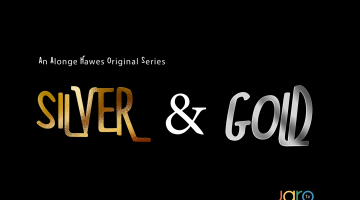

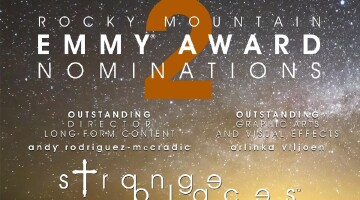

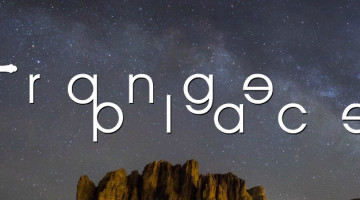

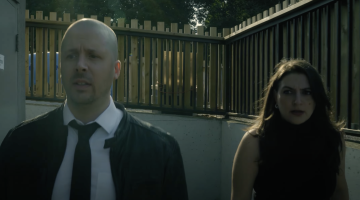
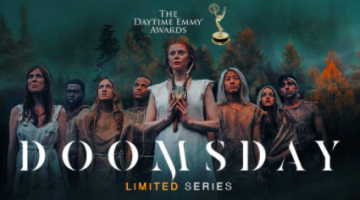
No Comment